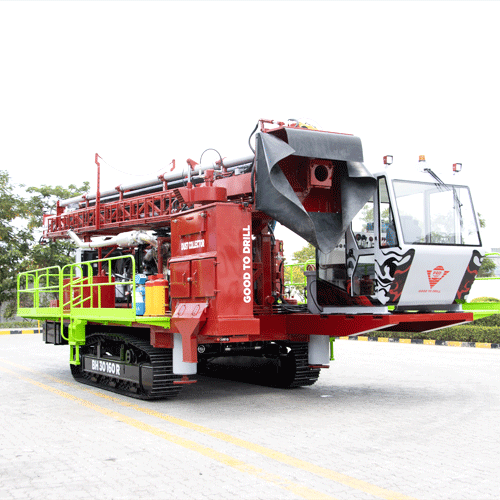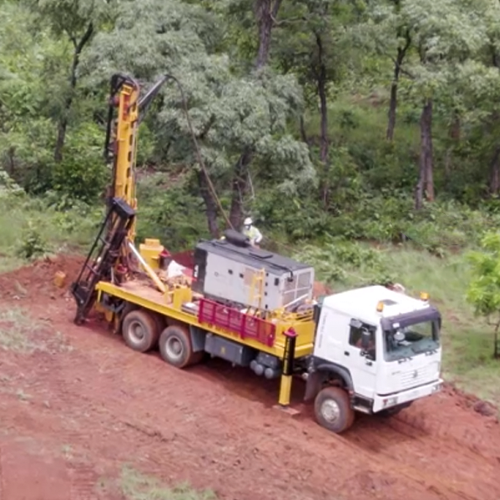Standard Penetration Test (SPT) for Soils – All You Need to Know
Need for Soil Testing:
The main cause of structural collapse is weak foundations, caused by poor bearing capacity of soil on which the foundation is laid. Buildings, roads, dams etc need high load bearing capacity, the power of soil to withstand the load of foundations acting on it. Structures which are constructed on soil having low bearing capacity would make the structures prone to unequal settlement or differential settlement of soil, resulting in failure.
What is Bearing Capacity of soil?
The bearing capacity of a soil is the maximum load per unit area, which the soil or the foundation will support without displacement. This obviously depends on the soil type, which, on a very broad scale, can be classified as very loose, loose, medium, dense and very dense soil, depending on whether the soil is cohesive, non-cohesive or rocky in nature. Bulk density of the soil is calculated in terms of kg/m3 and it varies from 1600kg/m3 for very loose soil to 2100 kg/m3 for dense soil. Above this value of bulk density, the soil is classified as very dense.
The Safe Bearing Capacity (SBC) is the permissible load the soil can withstand such that it neither fails in shear nor exceeds permissible settlement limits. Ultimate bearing capacity (UBC) is the absolute maximum pressure at which soil begins to fail. It is also referred as Gross Bearing Capacity of soil. When divided by a factor of safety, we get Safe Bearing Capacity (SBC). It is suggested that a factor of safety of 2 for buildings in ordinary construction and a factor of safety of 2.5 or 3 for heavy structures should be adopted.
Standard Penetration Test (SPT)
A variety of tests are conducted to determine the properties of soils, especially for deep foundations. Correlation of soil characteristics, from soil investigation reports and corresponding load tests from actual projects constructed, is essential to decide the type of soil tests to be performed.
The Standard Penetration Test (SPT) is a common in situ dynamic testing method used to determine the geotechnical engineering properties of subsurface soils. It is a simple and inexpensive test to estimate the relative density of soils and approximate shear strength parameters. The test is carried out within a borehole. The results can be used to determine the relative density, bearing capacity, and settlement of granular soil. The results can also be used to correlate the approximate strength of cohesive soil.
SPT Procedure
For this test, a borehole has to be drilled to the desired sampling depth. The test uses a thick-walled sample tube, with an outside diameter of 50.8 mm and an inside diameter of 35 mm, and a length of around 650 mm. The split-spoon sampler that is attached to the drill rod is placed at the testing point. A hammer of 63.5 kg (140 lbs) is dropped repeatedly from a height of 76 cm (30 inches) driving the sampler into the ground until reaching a depth of 15 cm (6 inches). The number of the required blows is recorded. This procedure is repeated two more times until a total penetration of 45 cm (18 inches) is achieved.
The number of blows required to penetrate the first 15 cm is called “seating drive” and the total number of blows required to penetrate the remaining 30 cm depth is known as the “standard penetration resistance”, or otherwise, the “N-value”. If the N-value exceeds 50 then the test is discontinued and is called a “refusal”. The interpreted results, with several corrections, are used to estimate the geotechnical engineering properties of the soil.
Pros & Cons of SPT
SPT is a low cost and straight forwards testing procedure to determine the relative density and angle of shearing resistance of cohesionless soils and also the strength of stiff cohesive soils. This test requires only a sample tube and a hammer, offers a few notable benefits, mainly that it is simple and inexpensive to perform.
SPT results are more useful in case of fine-grained sands as well as for coarse sands and silty sands. But for clay and gravel soils, its results are, generally not dependable.
The SPT is used to provide results for empirical determination of a sand layer’s susceptibility to soil liquefaction. Since the SPT is an in situ test method, the sample remains undisturbed while the test is conducted, unlike in an laboratory test method, where the sample has to be disturbed and therefore SPT finds wider use for such applications.
SPT Testing does have its drawbacks, though, most notably, in that it is inaccurate compared to more advanced methods, especially when sampling coarse sands or clay. The soil has to be subjected to further tests which measure properties of the in-situ soil structure, such as density, strength, and consolidation characteristics. For this purpose the sample has to be removed and such recovered sample is highly disturbed and therefore SPT is generally not recommended. To overcome this limitation, the test is often run with a larger sampler with a slightly different tip shape, so the disturbance of the sample is minimized. There will, however, be difficulty in converting the blow counts to N- values for such applications.
SPT gives only the N value, which is not directly representative of any soil property, unless the N Value is correlated to the particular property under testing, such as density. Sometimes, multiple correlations have to be resorted to, which makes the results susceptible to low quality. Apart from using rough correlations, there is a need to normalise the data to account for overburden pressure, sampling technique, and other factors. Although there are several correlations available in the literature to predict the properties and behaviour of cohesive soils (clays/silts) by standard penetration test, the use of SPT values for predicting properties of cohesive soils is not considered very reliable.
Moreover, for loose soils and soft clay soils, the blow count value will be very low and the sample gets significantly disturbed during SPT, giving rise to results under disturbed conditions, rather than under the original the intact soil conditions.
Correlation with other methods
A variety of techniques have been proposed to compensate for the deficiencies of the standard penetration test, including the Cone Penetration Test (CPT), in-situ vane shear tests, and shear wave velocity measurements. Being the most common in-situ soil testing method, SPT is frequently compared, correlated with and converted to CPT test results. To do so, a number of methods have been developed. For instance, the Robertson and Campanella method is used to correlate SPT and CPT data through the ratio of the tip resistance normalized against the atmospheric pressure over the N60value. Soil behaviour is categorized based on the specific ratio. The Jefferies and Davies method is another robust method for converting SPT N-values to CPT data or vice versa.
Concluding Remarks
Penetration resistance testing and sampling with an open ended pipe started in early 1900s. SPT was developed by The Reymond Concrete and Pile Company, USA, with the split barrel sample in 1927. The American Society of Testing and Materials standardised the test in 1950s. Since then the SPT has been adopted worldwide as the primary means of collecting geotechnical design data. An estimated 80-90 % of geotechnical investigations consist of SPT.
SPT cannot not be used where continuous samples are required. The test results are not reproducible, in view of the fact that the results are subject to significant variations due to drilling disturbances, mechanical variabilities as well as operator variabilities. Further, use of SPT method requires very close observations and supervisions with detailed loggings during the process of operation. For this reason, any old data on record should be used with extreme caution. The results of SPT are also influenced by many factors such as over burden stress, soil density, soil type, particle size, soil age and stress history of the soil deposits. This makes the choice of SPT for soil testing a bit more selective for certain applications.
Despite its setbacks, the SPT is widely used to predict the allowable bearing capacity of footings on sand by correlating for overburden pressures and the location of the water table. SPT data is routinely used for predicting the liquefaction triggered by earthquake loadings and for estimating the post-earthquake shear strengths.
SPT’s popularity can be attributed to its well-developed procedures, simplicity, ease of operation, ruggedness for use in a wide range of soil conditions and its flexibility, though its progress during operation is slower than other in situ tests.




